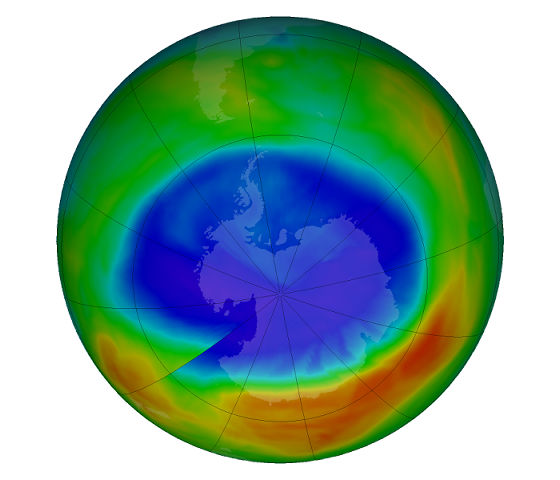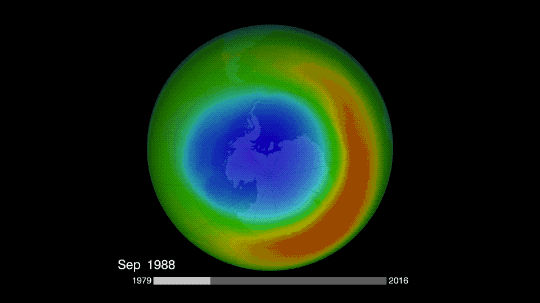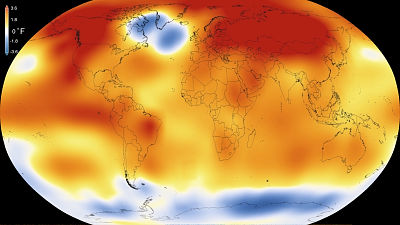NASA announced that the ozone hole in Antarctica became the smallest in 1988 and thereafter, "Global warming" also

It is in the upper layer of the atmosphereozone layerShields most of the ultraviolet rays from the sun and plays a role of creating living creatures. A phenomenon in which ozone concentration decreases in a part of this ozone layer "Ozone hole"Has been largely clouded up worldwide around the 1980s, but observations in 2017 confirmed that this ozone hole was the smallest since 1988. And the background is considered to have global warming.
Warm Air Helped Make 2017 Ozone Hole Smallest Since 1988 | NASA
https://www.nasa.gov/feature/goddard/2017/warm-air-helped-make-2017-ozone-hole-smallest-since-1988
The ozone hole is at its smallest size since 1988, thanks to hot air and a massive international effort | Popular Science
https://www.popsci.com/ozone-hole-small
This announcement was made by NASA and NOAA (American Oceanic and Atmospheric Administration). Both organizations have been observing the occurrence of the ozone hole in Antarctica every season since 1985 and in the observation in 2017 the scale reached its smallest scale on September 11 and the area was about 19.7 million square kilometers It turned out. This figure is lower than 1988 which was the smallest so far, and it is said that it is decreasing also in the data of the past several years.
The following map shows the situation of the ozone hole as of September 11, 2017. You can see that the dark blue part is an ozone hole covering Antarctica almost entirely. Again, at the "minimum past" level, depending on the observation year and time, the range may extend to the tip of the South American continent. For reference, the area of "19.7 million square kilometers" is about twice the size of the United States and is comparable to almost the same area as the Russian republic.

The following image made the change of the ozone hole from 1979 to 2016 as GIF animation. When clicking, you can see the state of the ozone hole which changes with each passing year by animation. (Capacity 1.3 MB)

Ozone hole is a phenomenon occurring around September when it is winter to spring in the Southern Hemisphere. The range of occurrence was particularly prominent over Antarctica, and it was confirmed that the area had expanded since the first time the phenomenon was confirmed in the 1970s. What was noted as the main cause of the occurrence of the ozone hole was used for the refrigerant of the air conditionerFreon gasIn the 1980s and 1990s, the movement to eliminate the use of freon gas has been promoted globally. Freon gas is subject to regulation, and instead substances such as "alternative CFCs" have been introduced through several twists and turns. Although not all direct causal relationships have been elucidated, it is believed that such efforts contribute to the reduction of ozone holes.
Similarly, "global warming" phenomenon is regarded as the cause of ozone hole reduction. Ozone hole is known to expand mostly from winter to early spring time, but in this period air in the sky is cooled most. As ozone concentration in the atmosphere decreases even when the temperature decreases, the ozone concentration stops decreasing as the temperature rises. In other words, it is also a sarcastic situation that the ozone hole decreases as cold air decreases due to global warming.
Related Posts:
in Science, Posted by darkhorse_log







